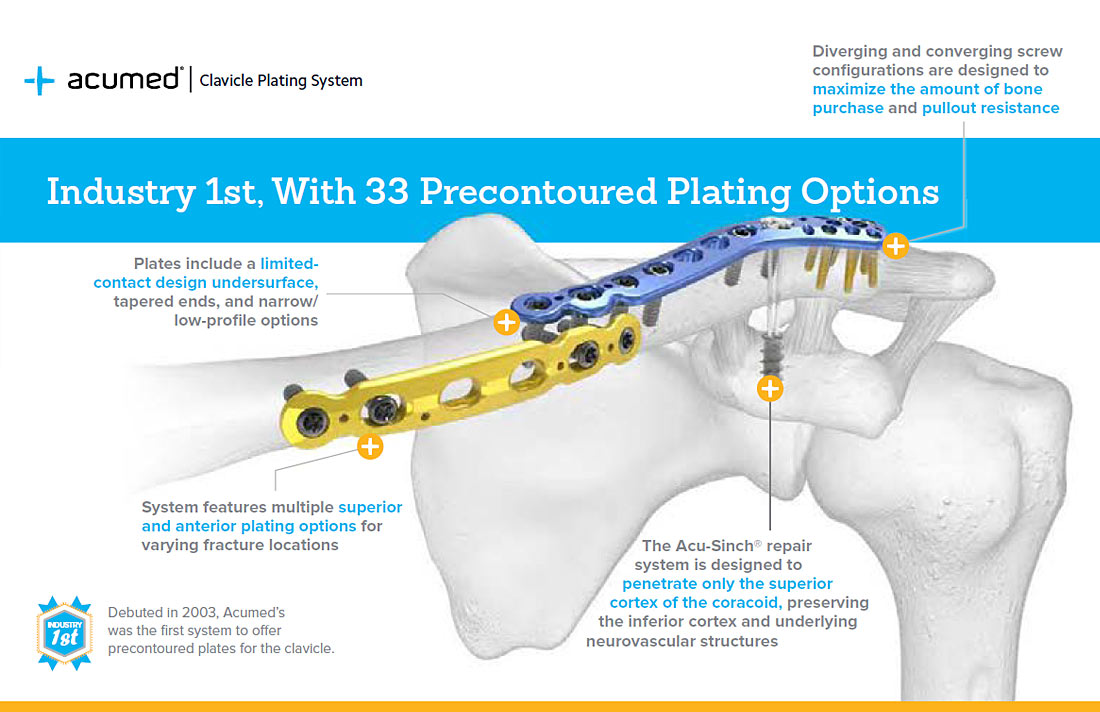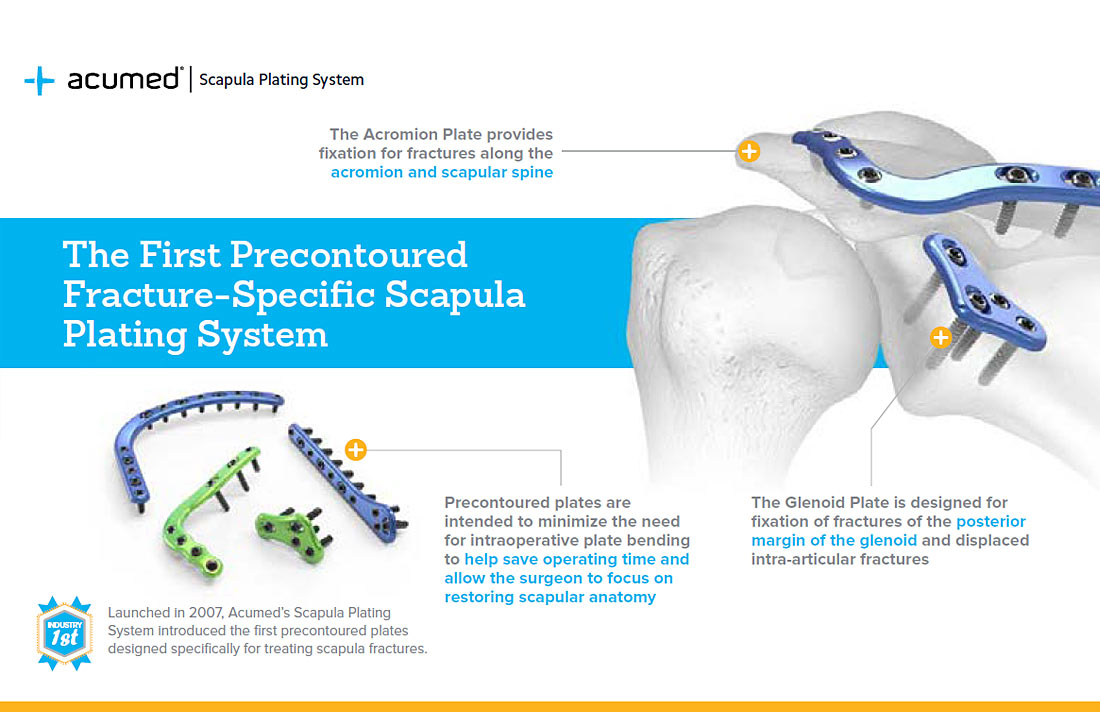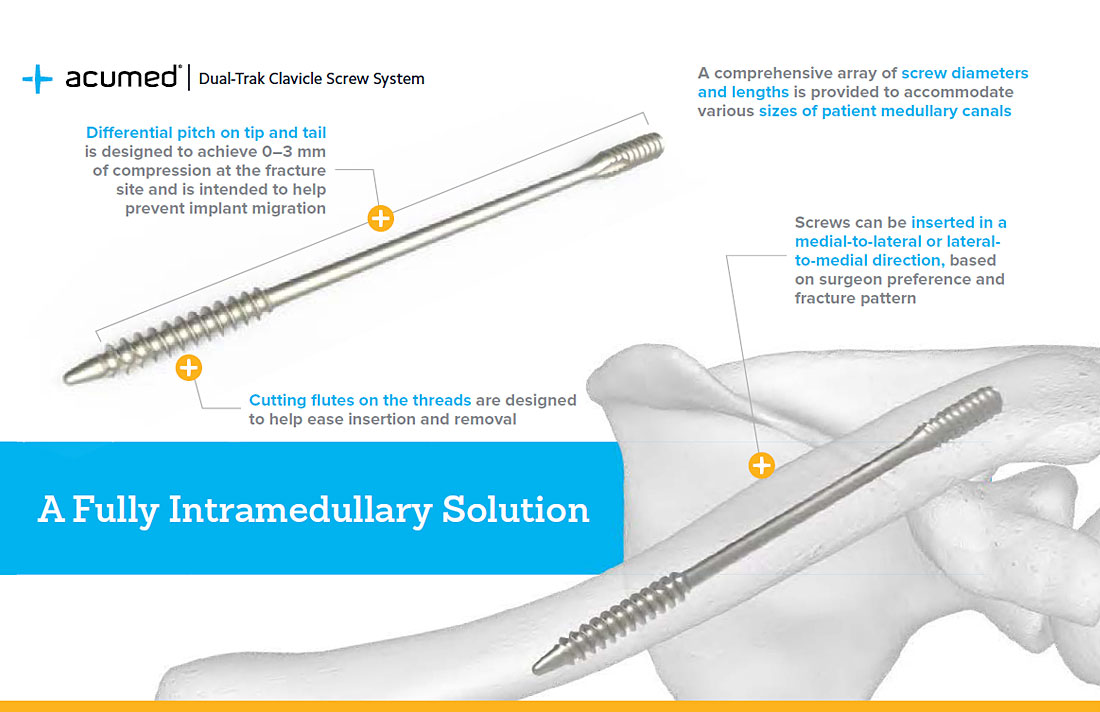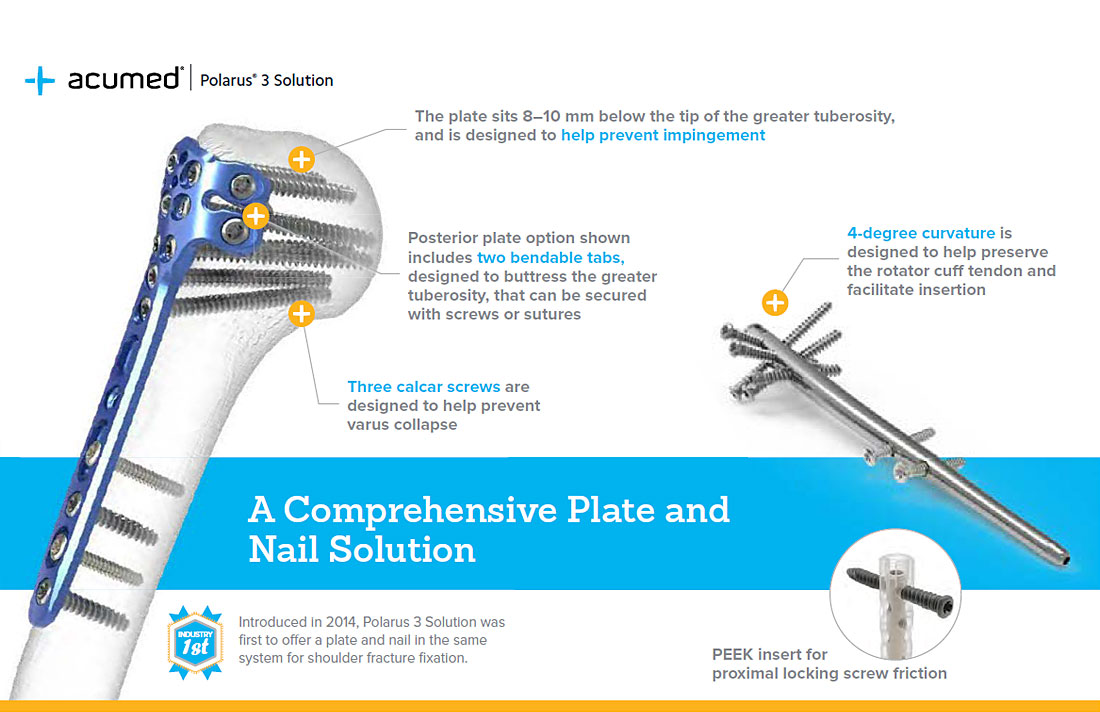Messaging Guide
Clavicle Plating System
Evidence
Why This Matters
The purpose of the Acu-Sinch Repair System is to increase stability of the distal clavicle fracture fixation. This article provides evidence that the addition of Acu-Sinch repair to a locking clavicle plate does increases stability of the fracture fixation for Type IIB distal clavicle fractures.
Excerpt
“CC fixation adds stability to type IIB distal clavicle fractures fixed with plate and screws when loaded to failure.”
First to Market With Comprehensive Precontoured Plating Options
33 unique plates—including anterior, superior midshaft, and superior distal options—accommodate varying patient anatomy and fracture patterns.
Acu-Sinch® Repair System
This coracoclavicular anchor penetrates only the superior cortex of the coracoid, preserving the inferior cortex and protecting the neurovascular structures below.
Plate Design
The clavicle plates include a limited-contact undersurface, tapered ends, and narrow/low profile options, and are made of high-grade titanium and titanium alloy.
Diverging and Converging Screws
Superior distal plates offer up to eight diverging screws for cases where bone stock is compromised. The screw configuration is designed to maximize bone purchase and pullout resistance.

Scapula Plating System
Origin Story
Launched in 2007, Acumed’s Scapula Plating System introduced the first precontoured plates designed specifically for treating scapula fractures. Although low in overall incidence rate, these fractures are complex to treat. Prior to Acumed’s precontoured scapula plates, surgeons were required to bend straight reconstruction plates by hand. By creating an anatomic plate family for scapula fractures, Acumed has given surgeons the tools to potentially reduce time spent in the OR.
Fracture-Specific System
The only scapula plating system on the market with precontoured, fracture-specific plates.
Comprehensive Plating Options
Medial border, lateral border, acromion, and glenoid plates for comprehensive fixation of scapula fractures.
Designed to Streamline Surgery
Precontoured plates are intended to minimize the need for intraoperative plate bending to help save operating time and allow the surgeon to focus on restoring scapular anatomy.

Dual-Trak Clavicle Screw System
Origin Story
The Acumed Dual-Trak Clavicle Screw System offers fully intramedullary implants designed to provide stable fracture fixation and anatomic reduction of clavicle fractures. Designed in conjunction with Robert M. Orfaly, MD, and launched in 2012, the system offers an alternative to clavicle plating. Intended to reduce soft tissue irritation and improve patient cosmesis compared to plating, Dual-Trak screws come in a variety of lengths and diameters and provide compression through a differential screw pitch design.
Intramedullary Clavicle Fixation
An alternative to clavicle plating, the system is designed to reduce prominent implant hardware and soft tissue irritation.
0–3 mm of Compression
Interfragmental compression is achieved by the differential pitch on the screw’s tip and tail ends.
Cutting Flutes
This design feature on the screw threads is intended to help ease insertion and removal.
Multiple Sizes
A comprehensive array of screw diameters and lengths offers options to accommodate the various patient medullary canal sizes.
Screw Direction Choice
Screws can be implanted in a medial-to-lateral or lateral-to-medial direction based on fracture pattern and surgeon preference.

Polarus® 3 Solution
Evidence
Why This Matters
The Polarus 3 Plates all include three dedicated medial calcar screws to support the medial column and are designed to keep the humeral head from falling into varus. This article describes the importance of calcar support in a proximal humeral plating.
Publication Excerpt
“We found that the use of calcar screws and adequate reduction of the fracture, to achieve medial support, significantly reduced the risk of reoperation due to fixation failure in patients with a PHF treated with a locking plate.”
Plate and Nail Options
Plate: Plating with Posterior Tab Option
Two bendable posterior tabs are intended to support posterior comminution.
Plate: Medial Buttress Support
Three targeted calcar screws are designed to help prevent the humeral head from collapsing into varus.
Nail: A More Medial Entry
A four-degree curvature in the nail allows for a more medial entry that helps preserve the rotator cuff and facilitates insertion.
Nail: Proximal Locking Mechanism
Pre-assembled PEEK insert is designed to prevent screw back-out by creating proximal locking screw friction.
